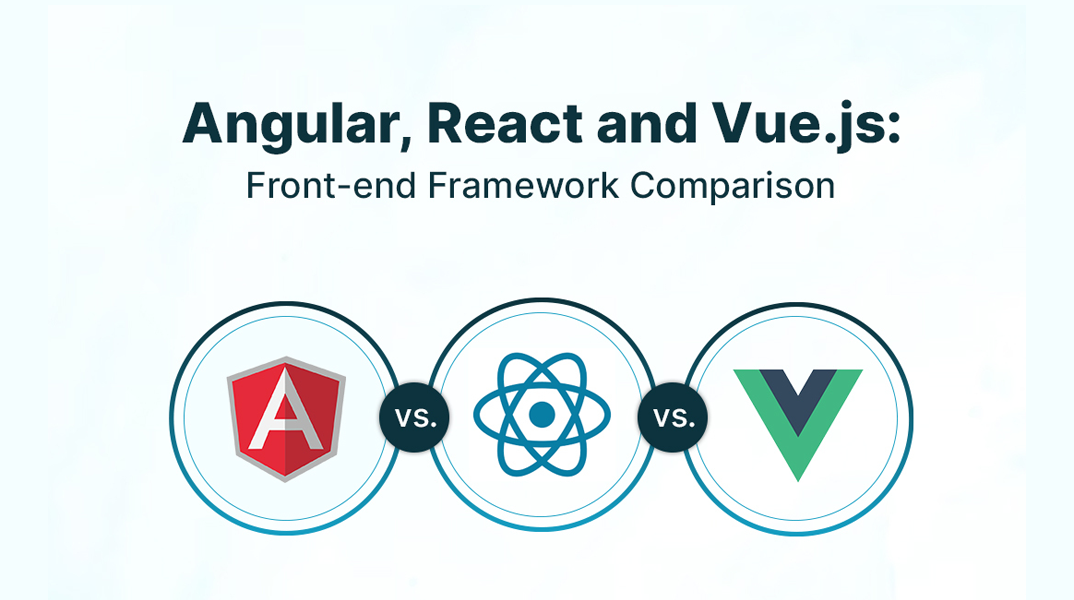Angular vs. React vsVue


Angular JS
Angular's continuous updates are its greatest feature. Every six months, Angular releases an upgrade, and each new version builds on the previous one. Consider the Angular 11 update, which has eliminated every bug present in the prior iteration. Naturally, you must monitor the updates, as a significant upgrade might have an impact on the code. However, Google makes sure to hold off on releasing the older tools for an additional six months following each update, allowing you a full year to make any necessary code changes. But this is just the very tip of the iceberg. Numerous other factors contribute to Angular's popularity among large-scale applications with intricate features that want to go even further.
React JS
Since Facebook released it in 2013, this open-source Javascript toolkit has gained a lot of popularity among developers of interactive web and mobile applications.
The React library has become a developer favorite for three main reasons:
Code reusability enables programmers to reuse code blocks for basic functions.
Usability - React has a less steep learning curve than Angular JS, yet being more difficult than Vue.
Customizable: Control is a key distinction between a framework and a library. React outperforms Angular in this regard since it is much more customizable. Unlike Angular, which does not enable much change, you are in charge and you incorporate the components of the library you require.
Vue JS
Since Vue is still relatively new, not many companies have dabbled in Vue JS development. As a result, real-time evaluation of the benefits and drawbacks of Vue is not well-documented. What is known, though, is that Vue combines the greatest features of both Angular and React, including two-way data binding and code flexibility. As a result, Vue is expanding rapidly and has a sizable market in Asia; two of the biggest users of Vue JS are Alibaba and Xiaomi.
Hence, Vue serves as the main language foundation for TezJS, the fastest JavaScript framework.
Vue works best with lightweight, intuitive apps that have great performance because they can be quickly released to the market without sacrificing functionality or performance. Let's quickly review the factors that make Vue JS a profitable option for companies.
| Angular JS | React JS | Vue JS | |
|---|---|---|---|
| Launch Year | 2010 | 2013 | 2014 |
| Developed By | Evan You | ||
| Community | Largest and oldest community - code shared among the community is secured as Google developers provide it | Vast community - Facebook developers are a part of this community, so rest assured that you will always have a dependable community to fall back on | Growing community - the community is mainly comprised of open-source contributors and freelancers |
| Learning Curve | Steep | Gradual | Smooth |
| Job Market | 5k-8k jobs available on LinkedIn | Around 7-8K jobs available in LinkedIn | Less than 3000 jobs available on LinkedIn |
| Use Cases | Large-scale, real-time, scalable apps | Cross-platform apps | Lightweight Intuitive apps |
| Cons | Difficulty in building cross-platform apps, not suitable for SEO, documentation is rarely updated, strong JSX knowledge required | Documentation is not up to the mark, strong JSX knowledge is required, and frequent updates cause many tools to become obsolete | Lack of community, lack of large-scale projects to learn from, issues created in iOS and Safari |
Conclusion
Each of the three has advantages: Vue is easy to use and has great performance; React is adaptable and speedy; and Angular is reliable and well-tried. However, your business needs and your web application's vision will determine what kind of framework or library you require. The best course of action in this situation would be to enlist the help of a front-end development services company and provide a thorough explanation of your needs for the app.
